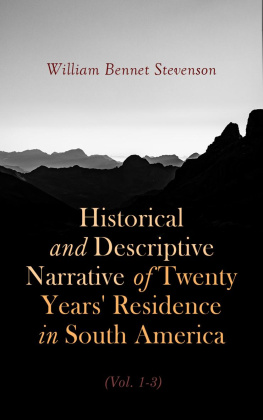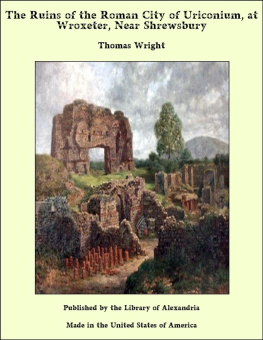HISTORICAL ASSOCIATIONS.
Proud Salopians! Well, have we not some good reasons for being proud? Is it not natural that as Shrewsbury has been the scene of important events and incidents, we should feel a little inordinate self-esteem? Hamlet will have it that the poor should not trumpet their own praises; but we are rich, and therefore we can indulge in some degree of conceit. Have we not something to be vain about? Have we not found homes and hiding-places for kings? Have we not had a mint here and made moneywhich is a difficult thing for most people to do? Has not the finest legislative assembly in the worldthe British Parliamentbeen held here? Have we not received Charter upon Charter from the hands of kings, and advanced them loanswithout security? Has not an English monarch actually sat in Shrewsbury, wearing a real crown? Have we not contributed thousands of men to the protection of the crown and dignity? Did not that glorious old martyrCharles I., who was murdered by Oliver Cromwellraise an army here, and did he not lay his uneasy head in a house on the Wyle Cop? Finally, not least though last, did not Falstaff, that gross, fat man, foolish, witty, and blusterous, fight one long hour by Shrewsbury clock? He says he did, if he may be believed; and is not that something to boast of? Treasuring up these things, is there not some justification for our being proud?
Breathes there a man with soul so dead
Who never to himself hath said,
This is my own my native town?
If such there be, go mark him well.
Douglas Jerrold said that there are some men who walk half-an-inch higher to heaven by what they tread upon. If Jerrold is right Shrewsbury people should be nearer to heaven than most folk, for, according to general opinion, we stand with extreme erectness on our self. And well we may. The town itself stands high, and the character generously attributed to us is in harmony therewith. It is situated on two hills of gentle ascent, which gradually rise from the bed of the river Severn. Who has not heard of Sabrina? The Welsh had the good taste to call it The queen of rivers. Its name is chronicled in history, and its beauty has been sung by poets. Leland says
Built on a hill fair Salop greets the eye,
While Severn forms a crescent gliding by.
Shakespeare alludes to it as the gentle Severn with the sedgy-bank, the sandy-bottomed Severn. It is an important river of England. It is the chief river of Wales. It has its cradle on Plinlimmon Hill on the verge alike of Montgomeryshire and Cardiganshire, not far from the coast of Cardigan Bay. It glides on between the everlasting rocks and fairy valleys, the fields and forests, where the wind, that grand old harper, harps on his thunder-harp of pines. It enters Shropshire at Melverley, and receives the waters of the Verniew at a ferry with an unpronounceable Welsh name; forms a crescent near Montford Bridge and Fitz; surrounds the Isle; then gracefully twines round Shrewsbury on all sides except the north; streams on through Uffington, skirting Haughmond Hill, and presenting with the outstretched landscape a beautiful edge to the grand old rocks; proceeds on its course to Atcham, where it receives the waters of the Tern: runs on placidly near Cound; noiselessly steals by Coalbrookdale, which, celebrated for its iron manufactures, presents a mingled picture of utility and poetry; passes then by Coalport, famous for its china works; glides through Bridgnorth; washes a narrow slip of land in the county of Stafford; flows on to Bewdley, Upton, Tewkesbury, and Gloucester; receives the Stroudwater at Framilode; joins the Hereford and Gloucester canal opposite Gloucester; and becomes absorbed in the sea at the Bristol Channel, about twelve miles from Bristol. Formerly the Severn ran in five channels at the eastern side of Shrewsbury, and spread into a marshy lake, which extended from the foot of the Wyle Cop to the site of the Abbey. The river aboundsor did aboundwith salmon, trout, pike, shad, flounders, and carp. The river was free, because there was no Board of Conservators, and salmon was not a dish exclusively for the aristocracy. The distance of the Severn from its source to its entrance into the sea is about 250 miles. In point of celebrity it ranks next to the Thames; in magnificence it is excelled, in beauty and diversity of scenery it is equalled by none in our land.
The county encompassed by the Severn is undoubtedly of great antiquity, and of very aristocratic reputation. The capital of itShrewsburydates back to that indefinite and undiscoverable period familiarly called time immemorial. A local historian says that one of the earliest names by which it has been recognised is Careg Hydwyth, the rock covered with shrubs. The Britons called it Pengwerne, a brow or hill of elders, because there were numbers growing on the spot. The Welsh gave it one of those awful names which tax the courage of Englishmen to encounter, but which signified an eminence surrounded by water. The Saxons named it Scrobbesbyrig, an appellation which may have been derived either from the fact that the town was encompassed with shrubs, or, not from the natural aspect of the place, but from the name of some possessor of Sciropescire or district territory, under the denomination of Scrope, Scropesbyrig. Subsequently the Normans slightly altered the designation to Sciropesberie, afterwards Schrosberie, and Salopesberie, whence we have Salop and Shrewsbury.
Who laid the foundations of Shrewsbury, and at what period they were laid, are questions which have elicited various opinions. Tristram Shandy maintained in a grave and elaborate argument there was no doubt whatever that he had been born; and so we suppose with equal certainty there can be no denial that Shrewsbury was built by some person or persons unknown. The first thing we hear about it is that it was a city of refuge for the Britons to whom it offered a retreat when they were driven by the Saxons from the ancient fortress of Uriconium. For the Saxonsvalorous and patriotic, but fierce, warlike, barbarous, the German Scourges of Godafter conquering Kent, carried on their ambitious struggles with the Britons until the latter all over the little island were completely defeated, the Silures in Pengwerne, though the most heroic of the Britons, among the rest. Cynddrwyn about the middle of the sixth century had possession of Uriconium. His son, Cynddylan, was a British chieftain and had his royal palace at Shrewsbury; and when the devastating Saxon, in his career of spoliation, made inroads into this district for the purpose of expelling the Britons from Uriconium, Cynddylan led an armed force from Shrewsbury over the Tern by Atcham for the defence of his father. But the Britons were defeated in the battle which ensued, and, having lost Cynddylan who was slain in the encounter, fled to Shrewsbury, which they called Pengwerne. Llywarc Hn, a prince of the Cambrian Britons, who lived in the 6th century, mentions that name in his writings; and from him it also appears that several of the principal towns of the county had their rude beginnings in that early period. The theme of Llywarcs metrical composition is our mountains, our river, and our dwelling-places.







